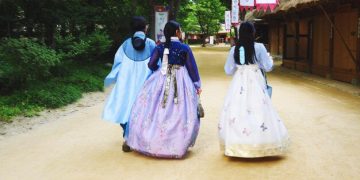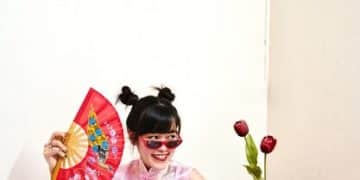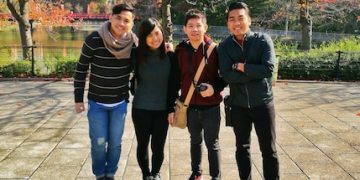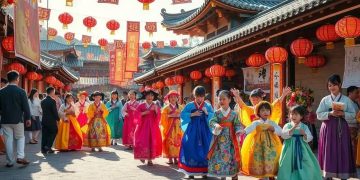Understanding Seollal: Korean New Year Celebrations in the US
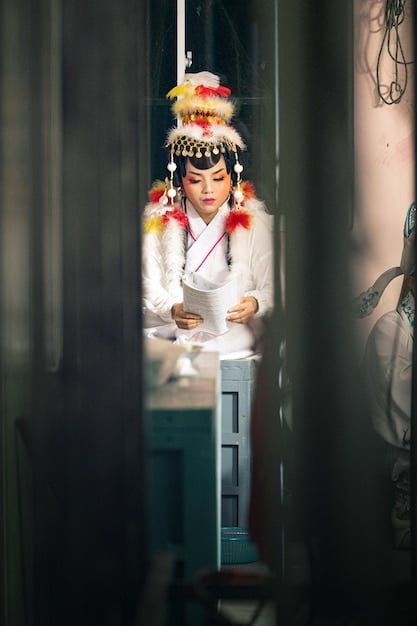
Seollal, the Korean New Year, is a significant cultural holiday celebrated in the US by the Korean diaspora, reflecting traditions of family reunions, ancestral veneration, and the sharing specific foods and games.
Understanding the Significance of Seollal (Korean New Year) Celebrations in the US reveals a vibrant tapestry of tradition and community. This article explores how this important Korean holiday is observed stateside, blending heritage with the American experience.
What is Seollal? A Cultural Cornerstone
Seollal, or Korean New Year, stands as one of the most important holidays in Korea. But how does this tradition translate when celebrated in the United States? Let’s delve into the history and cultural significance of Seollal.
Seollal is more than just a day off; it’s a cornerstone of Korean culture. Rooted in ancient agricultural traditions and ancestral veneration, it marks the beginning of the lunar year and a time for family.
Historical Roots of Seollal
The celebration of Seollal dates back centuries. It has its roots in ancient agricultural societies where the lunar cycle dictated planting and harvesting seasons.
Core Cultural Values Embodied in Seollal
Seollal embodies several core Korean cultural values, including filial piety (honoring elders), respect for ancestors, and the importance of family unity.
- Filial Piety: Demonstrating respect and care for parents and elders is central to Seollal.
- Ancestral Veneration: Paying homage to ancestors through rituals like Charye is a key practice.
- Family Unity: Seollal promotes family togetherness, with many Koreans traveling great distances to be with loved ones.
Seollal, therefore, is a reminder of the intricate web of family connection, historical customs, and profound cultural values that hold great significance in Korean society. It is a festival that honors the past while welcoming the future, whether observed in Korea or within the Korean diaspora around the world.
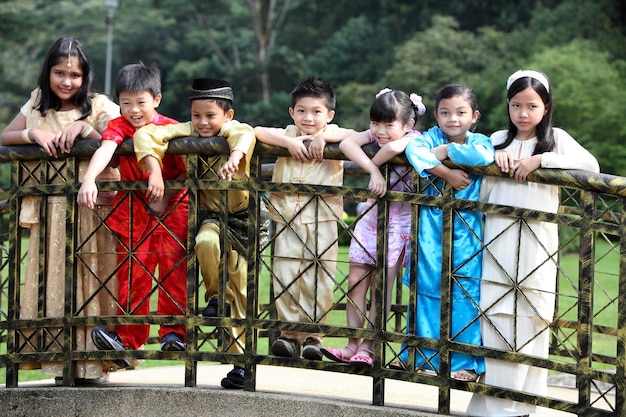
Seollal Traditions: A Blend of Old and New
The traditions of Seollal are deeply ingrained in Korean culture, but they evolve when practiced in the United States. Observing Seollal is a blend of honoring the past while adapting to a new environment. Here are some key traditions observed during Seollal:
The celebration is marked by specific rituals, traditional foods, games, and attire that reflect Korean heritage and community values. These traditions, when adapted to the American context, can take on unique forms.
Sebae: The Bow of Respect
One of the most important traditions of Seollal is “Sebae,” the formal bow given to elders. Children perform Sebae to their parents and grandparents, wishing them good health and fortune in the new year.
Tteokguk: The Soup of Longevity
Eating “Tteokguk,” a traditional rice cake soup, is another essential custom. It symbolizes good luck and adding another year to one’s life.
- Hanbok: Wearing traditional Korean clothing, such as the Hanbok, is common during Seollal celebrations.
- Folk Games: Playing traditional folk games like Yut Nori (a board game) and kite flying add a festive spirit to the celebration.
- Sharing Food: Preparing and sharing traditional foods not only enhances the Seollal experience but also fosters a sense of community among Korean Americans.
The adaptation of Seollal traditions in the United States is a dynamic process. It showcases how cultural practices can remain relevant and meaningful as they evolve across borders, connecting successive generations of Korean descendants in a profound celebration of identity and heritage.
Seollal in the US: How Korean-Americans Celebrate
For Korean-Americans, celebrating Seollal in the United States is a balancing act. They strive to maintain their cultural heritage while integrating into American society. So how do Korean-Americans celebrate Seollal?
It’s a way of maintaining a connection to their roots, passing down traditions to younger generations, and creating a sense of community. The celebrations often include a mix of traditional customs and modern adaptations.
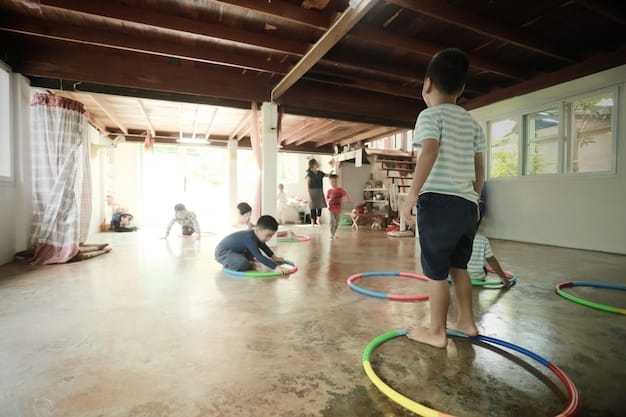
Community Gatherings
Many Korean-Americans participate in community gatherings organized by Korean churches, community centers, and cultural organizations. These events provide a space for celebrating Seollal together, sharing traditional food and games, and fostering a sense of belonging.
Family-Focused Celebrations
At home, Korean-American families often observe Seollal with a family-focused celebration. This may include performing Sebae, preparing and sharing Tteokguk, and honoring ancestors with a memorial service.
- Passing Down Traditions: Parents and grandparents make an effort to pass down Seollal traditions and Korean culture to their children and grandchildren.
- Language Preservation: Speaking Korean and teaching the language to younger generations is a key part of preserving cultural identity during Seollal.
- Intergenerational Connection: Seollal is a time for strengthening bonds between different generations of Korean-American families.
The celebration of Seollal in the United States highlights how culture adapts and transforms in new environments, creating a vibrant, dynamic blend of old and new traditions. Through their celebrations, Korean-Americans weave together their distinct cultural identity into the diverse fabric of American society, reinforcing the significance of the holiday in their cultural narrative.
The Significance of Family During Seollal
Family is at the heart of Seollal celebrations, whether in Korea or the United States. It is a time for strengthening family bonds, honoring elders, and passing down traditions.
The holiday provides an opportunity to reconnect with family members, share stories, and create lasting memories to be shared across generations.
Reconnecting with Relatives
Seollal is a time for families to reunite, often traveling long distances to be together. Strengthening the bond among family members is highly prioritized during this time.
Honoring Elders
Showing respect and gratitude towards older family members is a central part of Seollal. The Sebae ritual is symbolic of this respect.
- Gifting: Traditionally, giving gifts to parents and grandparents is a way of showing appreciation and love.
- Words of Blessing: Exchanging words of blessing, especially from younger to older family members, is a meaningful part of Seollal.
- Quality Time: Spending quality time together, sharing meals, and playing games, helps families to bond and create lasting memories.
The emphasis on family during Seollal highlights the Korean culture’s strong value placed on relationships, respect, and interconnectedness. This focus on family helps preserve cultural identity and provides emotional support and connection to a broader heritage, demonstrating how family traditions shape and sustain cultural identity, whether in Korea or among the Korean diaspora in the United States.
Food and Feasting: A Culinary Journey Through Seollal
Food plays a pivotal role in Seollal celebrations, with specific dishes carrying symbolic meanings and significance. Participating in traditional feasts is an integral part of experiencing Seollal. Understanding which dishes are most commonly eaten and why is important for recognizing the depth of this tradition.
From Tteokguk to various side dishes and desserts, each item on the Seollal table contributes to a rich culinary experience that is meant to welcome prosperity and good fortune.
Tteokguk: A Symbol of New Beginnings
As mentioned earlier, Tteokguk is perhaps the most iconic Seollal dish. The sliced rice cakes symbolize purity and new beginnings for the upcoming year.
Galbijjim: Braised Short Ribs
Galbijjim, or braised short ribs, is a popular dish enjoyed for its rich and savory flavors.
- Japchae: Japchae, a noodle dish made with glass noodles and vegetables, is often part of the Seollal spread.
- Mandu: Mandu, Korean dumplings, are also enjoyed during Seollal, often as part of the Tteokguk or served separately.
- Yakgwa: Yakgwa, a traditional Korean honey cookie, is a sweet treat to enjoy during Seollal celebrations.
The communal sharing of these foods during Seollal strengthens familial bonds and promotes a collective sense of cultural identity. This culinary journey through Seollal demonstrates how food becomes a powerful vehicle for transmitting cultural values, fostering togetherness, and celebrating heritage within the family and community, both in Korea and the United States.
The Future of Seollal Celebrations in the US
As younger generations of Korean-Americans grow up, the way Seollal is celebrated evolves. It is vital to look at the trends currently in place to gauge the likely future of Seollal in the United States.
There are ongoing efforts to preserve and promote Korean culture in the United States. This ensures Seollal’s traditions are maintained across generations to come.
Intergenerational Transmission of Culture
Passing down Seollal traditions and Korean cultural values from one generation to the next is essential for maintaining its significance.
Adapting to Modernity
Finding ways to adapt Seollal celebrations to fit into modern American lifestyles is a key challenge for Korean-American families.
- Online Communities: Korean-American online communities play a crucial role in sharing information, resources, and support for celebrating Seollal.
- Cultural Education: Promoting Korean cultural education in schools and community centers helps ensure that younger generations understand and appreciate Seollal.
- Cross-Cultural Exchange: Engaging in cross-cultural exchange with other communities in the United States can help promote awareness and appreciation of Korean culture.
The future of Seollal celebrations in the United States depends on the ongoing efforts of families, communities, and organizations to preserve and promote Korean cultural heritage. By embracing both tradition and modernity, Korean-Americans can ensure that Seollal continues to thrive as a meaningful and vibrant part of their identity for generations to come. This also helps contribute to the wealth of diversity that makes the United States a melting pot of culture and tradition.
| Key Element | Brief Description |
|---|---|
| 👨👩👧👦 Family Gathering | Reunions are central, with families traveling to celebrate together. |
| 🍲 Tteokguk | Eating this rice cake soup symbolizes good luck and aging. |
| 🙇 Sebae Ritual | Children perform a formal bow to elders, receiving blessings. |
| 🎉 Traditional Games | Games like Yut Nori add festive spirit. |
Frequently Asked Questions About Seollal Celebrations in the US
Seollal serves as a crucial link to their cultural identity, providing a chance to celebrate their heritage and traditions. Through Seollal, Korean-Americans reinforce the value of their cultural background.
Korean-Americans often blend traditional practices with modern conveniences. For example, they might celebrate with both traditional Korean feasts alongside typical American dishes. This creates a fusion that suits their dual cultural identity.
Yes! Many Korean-American communities host public events and festivals during Seollal. These are inclusive and welcome people from all backgrounds to experience and learn about Korean culture. Celebrating and educating others is key.
Challenges include the lack of family support due to geographical distances, balancing work or school commitments with traditional celebrations. Also, the fading proficiency in the Korean language makes it difficult to pass down customs.
Younger Korean-Americans often embrace Seollal by incorporating social media to share their celebrations. They also are more open to blending traditions with more contemporary practices, ensuring the holiday stays appealing and relevant.
Conclusion
Understanding the Significance of Seollal (Korean New Year) Celebrations in the US reveals a unique facet of cultural preservation and adaptation. This is how one celebration can sustain a community’s link to its heritage while enriching the cultural landscape of its adopted homeland. The blend of tradition and modernity ensures its continuing relevance and vitality for generations to come.

